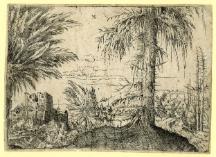Period Band B
Curatorial Rating: 1
The Rise of the Print in Europe, 1400-1800
Tutor: Nicola Sinclair
Description
Prints played a critical role in early modern European visual culture. Comparatively inexpensive and lightweight, and ranging from cheap popular images to sophisticated artistic productions, they reached a wide range of audiences and circulated easily across geographic boundaries. This module analyses the beginnings of European printmaking around 1400, when woodcuts were first widely circulated, and follows its dramatic expansion in formats, themes and audiences up to 1800. We will address a range of issues including the technical production of prints, processes of marketing and circulation, and the subject matter that appeared in printed images, often well in advance of other artistic media.

Module code HOA00041I
